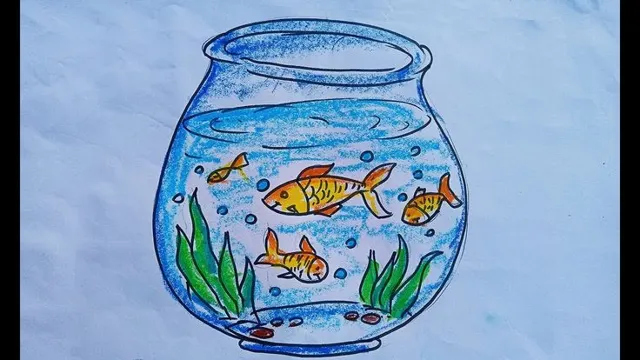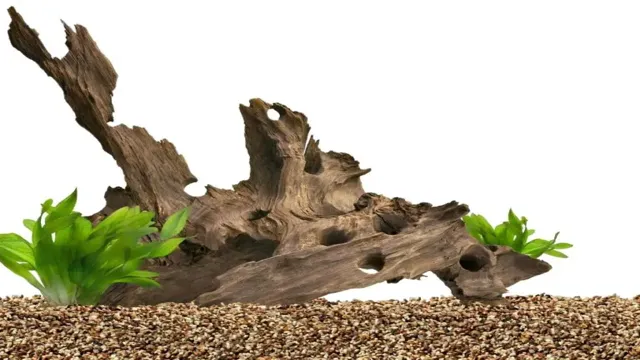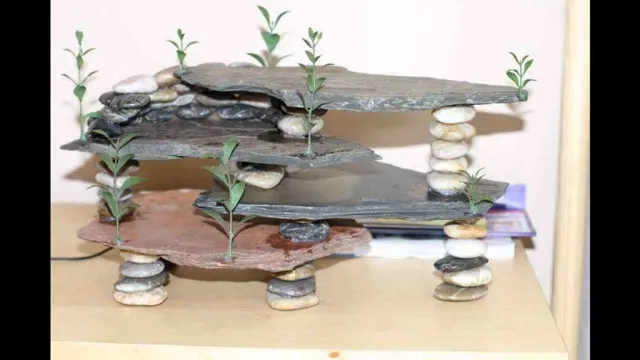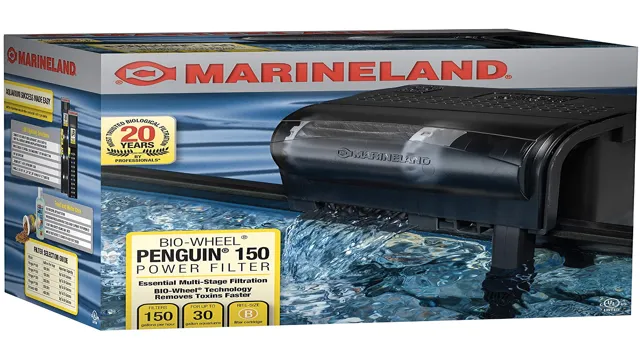Have you ever wanted to draw an aquarium, but didn’t know where to start? Don’t worry, drawing an aquarium is much simpler than it may seem. With this easy step-by-step guide, you’ll be able to create a masterpiece filled with colorful fish and vibrant coral. Think of drawing an aquarium as creating your underwater world, a place where you can let your imagination swim free.
By following the steps, you’ll gain confidence with each stroke of your pencil or pen. While it may seem daunting at first, with a little patience, your aquarium will come to life on paper. Starting with the base of your aquarium, you’ll learn how to draw the glass, water, and sand.
Then, you’ll add in the elements that make your aquarium stand out – the fish, plants, and accessories. You can tailor your aquarium to your liking, adding personalized touches that reflect your unique style. Drawing an aquarium allows you to explore the depths of creativity and showcase your artistic abilities.
Plus, it’s a fun and engaging way to spend your time. By the end of this guide, you’ll have a beautiful aquarium creation that you can be proud of. So, grab your pencils and let’s dive in!
Materials Needed
If you’re wondering how to make a drawing aquarium, don’t worry, it’s very simple. The materials you’ll need are a sheet of paper, a pencil, an eraser, and some colored pencils or markers. You can also use a ruler to help you draw straight lines if you want.
Once you have all the materials, you’re ready to start. First, draw the outline of the aquarium using your pencil and ruler if necessary. Then add some details such as the waterline, gravel or sand, plants, and decorations.
Don’t forget to draw some fish too. You can use colored pencils or markers to add some vibrancy and life to your aquarium. If you’re feeling creative, you can even add some shadows and reflections to make your drawing more realistic.
With a little practice, you’ll be able to create stunning aquarium drawings that will make everyone jealous. So why not give it a try?
Paper or Sketchpad
When it comes to creating art, choosing the right materials can be crucial to bringing your vision to life. One of the biggest decisions you’ll make as an artist is whether to use paper or a sketchpad as your canvas. Both materials have their benefits and drawbacks, so it’s important to consider what you’re looking for in your work before making a decision.
If you’re looking for versatility and the ability to easily experiment with different mediums, using paper might be the way to go. With paper, you can choose from a wide variety of textures and weights to find the perfect fit for your project. However, keep in mind that working on individual sheets of paper can be less convenient than having everything contained in one sketchbook.
On the other hand, if you prefer having a dedicated space to work on multiple pieces, a sketchpad might be a better option. With a sketchpad, you can easily flip between works in progress or create a cohesive series of pieces. Additionally, the protective cover of a sketchpad can help keep your work safe from smudging or damage.
Ultimately, the decision to use paper or a sketchpad will largely depend on your personal preferences and the specific needs of your work. Whichever material you choose, be sure to experiment with different types to find what works best for you. After all, the right materials can make all the difference in bringing your artistic vision to life.

Pencils (HB, 2B, 6B)
If you’re an artist or someone who loves to sketch, you know how important it is to have the right tools. One of the most essential items you’ll need to create amazing drawings is a good set of pencils. When it comes to pencils, there are plenty of options out there to choose from, but HB, 2B, and 6B are some of the best options for artists.
These pencils are known for their versatility, allowing you to create everything from light, airy sketches to bold, dark lines and shading. When choosing your pencils, you’ll want to make sure you have a range of options that give you the ability to create different effects in your drawings. In general, the HB pencil is a great option for creating light sketches and outlines, while the 2B pencil is ideal for adding darker lines and shading.
If you want to create bold, dramatic lines or add deep shadows to your drawings, the 6B pencil is your best bet. Another thing to keep in mind when choosing your pencils is the quality of the lead. High-quality pencils use lead that’s smooth and easy to work with, allowing you to create fine details and smooth shading.
Cheaper pencils may have rougher lead that can make it difficult to achieve the effects you’re looking for. In summary, if you’re looking to create amazing sketches and drawings, pencils are an essential tool in your arsenal. HB, 2B, and 6B are some of the best options for artists, giving you the ability to create a range of effects in your sketches.
Make sure to choose high-quality pencils with smooth, easy-to-work-with lead to get the best results.
Eraser
When it comes to creating art or taking notes, having a reliable eraser is essential. Here are a few materials you may need to make your own eraser: rubber or vinyl material, a sharp knife or scissors, a ruler, and a pencil. First, measure and mark out the shape and size of your eraser on the rubber or vinyl material.
Using a sharp knife or scissors, carefully cut along the lines to create your eraser shape. You can also create smaller erasers by cutting your material into smaller pieces before shaping. Once you’ve cut your desired shape, test it out on a scrap piece of paper to ensure it erases cleanly without smudging or leaving any residue behind.
And there you have it, a homemade eraser that’s personalized to fit your needs. With proper care, it should last you a long time and save you money in the long run compared to constantly buying new erasers.
Ruler
When it comes to drafting or drawing, a ruler is an essential tool. To create straight and precise lines, you’ll need a straight edge. The most common ruler materials are plastic, wood, and metal.
Plastic rulers are inexpensive and easy to find but can be less durable than metal or wooden ones, and they are more prone to bending. Wooden rulers are sturdy and durable but can wear down with frequent use. Metal rulers are the most durable and long-lasting, but they can be more expensive than plastic or wooden rulers.
When choosing a ruler, consider the type of work you’ll be doing and the level of precision required. A precise engineering or construction project may require a metal ruler, while a simple school project may only need a plastic or wooden one. Regardless of the material, always ensure that the ruler has clear and accurate markings to make your work easier and more efficient.
Compass
When it comes to navigating in the great outdoors, having a reliable compass is essential. While there are various types of compasses available, the basic materials needed are relatively simple. First and foremost, you will need a magnetized needle, typically made of steel or another ferromagnetic material.
This needle must be suspended on a low-friction pivot, such as a jewel bearing or a piece of plastic. You will also need a compass card, which is marked with degrees and often rotates around the needle. This compass card can be housed in a casing, often made of plastic or metal. (See Also: How to Clean Aquarium Water After Spawning: Tips and Tricks)
Finally, you will need a baseplate to hold everything together and provide a surface for taking readings. Some compasses also come with additional features, such as a sighting mirror or a declination adjustment screw. Whether you are hiking, camping, or exploring, having a well-made compass can make all the difference in your outdoor adventures.
So before you head out into the wilderness, make sure you have all the necessary materials to navigate your way with confidence and ease.
Coloring Materials (optional)
Coloring Materials If you decide to go beyond the standard pencil or marker, there are a plethora of coloring materials that can add an element of uniqueness to your artwork. Some popular options include colored pencils, watercolor paints, pastels, and even gel pens. When choosing materials, it’s important to consider what you want to achieve with your project.
Colored pencils are great for creating detailed designs, while watercolors offer a more fluid and airy feel. Pastels can create a soft, blended effect, and gel pens can add a metallic or glittery touch. Whatever materials you choose, be sure to use high-quality supplies to get the best results.
With the right coloring materials, you can elevate your artwork to a new level of creativity and imagination.
Step 1: Draw the Tank
If you’re interested in making a drawing of an aquarium or fish tank, the first step is to draw the tank itself. A common mistake people make is to start by drawing the fish right away, but it’s crucial to establish the proper proportions of the tank first. Begin by drawing a rectangle or square to represent the tank.
Next, add diagonal lines to mark the corners of the tank as they would appear in three dimensions. Connect the lines to create the sides of the tank, and add a curved line at the top to create the shape of the water. Pay attention to the angles and perspective, making sure the top of the tank is slightly wider than the bottom, and that the sides taper inward slightly.
Once you’ve drawn the tank, you can add decorations, plants, and, of course, your fish! By starting with a proper tank, your drawing will have a solid foundation to build upon and will look more realistic and believable. So, start with a good foundation by drawing your tank and then let your imagination run wild from there!
Use a ruler and a compass to draw a rectangle for the tank
Tank, rectangle, ruler, compass Are you ready to draw your very own tank? Let’s get started! First, grab a ruler and a compass. Using your ruler, draw a straight line for the base of your rectangle. Next, use the compass to draw two parallel lines perpendicular to the base, the same length as the base.
These lines will be the sides of your rectangle. Finally, use the ruler to draw another straight line parallel to the base, connecting the ends of the two sides and completing the rectangle. Congratulations, you’ve just drawn the basic shape of a tank! Now it’s time to get creative and add your own personal touches to make it unique.
Draw the thickness of the glass panel on the sides and bottom
When drawing a tank, it’s crucial to pay attention to the thickness of the glass panel on the sides and bottom. This will ensure that the tank not only looks visually appealing but also offers adequate support to the water it’ll hold. To start, we advise drawing the edges of the aquarium, considering the thickness of the glass by lining it in a darker shade.
This will give the appearance of depth and ensure that the final image looks three-dimensional and realistic. It’s important to note that the thickness of the glass must be consistent throughout the entire tank. Failure to do so could lead to a weak spot, resulting in a breakage which can be fatal for your aquatic creatures.
Drawing the tank is the first step to setting up a happy and healthy aquarium, so take your time and enjoy the process. The keyword in this paragraph is “thickness of the glass panel.” It’s vital to include this keyword in your content, as it’s the main topic of the article and will help search engines better understand the content’s purpose.
By incorporating it in a conversational tone, we can ensure that the content is both engaging for the reader and well-optimized for search engines. With such tips, you can now begin to draw your dream aquarium with confidence while considering all the fundamentals.
Add details like the frame, metal strip, and screws
When it comes to drawing tanks, there are specific steps you need to follow to ensure the final product comes out great. Step 1 involves drawing the tank itself which includes the frame, metal strip, and screws that hold it together. Make sure you have a clear image of what you want your tank to look like before starting.
Draw a rectangular shape for the body of the tank and then add a rounded shape on top for the turret. Adding details like the frame, metal strip, and screws will give your tank a realistic appearance. Pay attention to the smallest details such as the gun barrel, the hatch, and the tracks.
Use bold lines to separate the different components of the tank, making it easier for you to color and shade in later. Keep in mind that the shape and position of each part will affect the overall look of your tank, so be sure to get it right. By following these steps, you can create a detailed and accurate drawing of a tank that is sure to impress.
Step 2: Add Decorations
Now that you have created the outline of your aquarium, it is time to add some decorations to make it come to life! One option is to add some rocks and pebbles to the bottom of your tank. These will not only provide a natural look but also help keep your plants in place. Additionally, you can add some plants to your tank, such as seaweed or coral.
These will not only add aesthetic appeal but also provide a hiding place for your fish. You can also consider adding some figurines or other decorative items, such as a sunken ship or treasure chest. Remember, the key is to create a habitat that is both visually appealing and comfortable for your fish.
By incorporating decorations, you are not only making your aquarium look beautiful but also providing a stimulating environment for your fish to thrive in. So, get creative and have fun with it!
Draw rocks, corals, and plants at the bottom of the tank
In order to create an aesthetically pleasing aquarium, it’s important to add decorations that mimic the natural habitat of the fish. This includes rocks, corals, and plants at the bottom of the tank. Not only do these decorations provide a sense of authenticity to the environment, they also provide a hiding place for the fish and increase their overall happiness.
Placing different shapes and sizes of rocks at the bottom of the tank can create interesting caves and crevices for the fish to explore and swim through. Adding corals can help mimic the feeling of a true ocean environment and adding plants can provide added color and texture to the bottom of the tank. When selecting decorations, it’s important to choose items that are safe for the fish and the type of water they live in.
By adding these natural-looking decorations to the aquarium, your fish will feel more at home and thrive in their new environment.
Add details like bubbles, gravel, and sand
When it comes to setting up an aquarium, one of the most exciting steps is adding decorations. Not only do they add aesthetic appeal, but they also provide a more natural environment for your aquatic pets. To get started, consider adding some bubbles to your aquarium. (See Also: How to Keep Plants Alive in Aquarium: Expert Tips and Tricks)
This not only looks great, but it also helps to oxygenate the water, which is essential for the health of your fish. Another great decoration to add is gravel. This not only adds a natural look to the bottom of your tank, but it also serves a functional purpose.
Gravel helps to anchor plants and provides a surface for beneficial bacteria to grow. Finally, consider adding some sand to your aquarium. Sand provides a natural look and feel for your aquarium, as well as a great substrate for live plants and bottom-dwelling fish.
By adding these simple decorations to your aquarium, you can create a more natural and visually appealing habitat for your aquatic pets.
Step 3: Draw the Fish
Now that we have our custom aquarium design, it’s time to add some life to it by drawing the fish. If you’re not confident with your drawing skills, don’t worry – there are plenty of tutorials and guides online that can help you get started. One key tip is to make sure you have reference images of the fish you want to draw.
This will help you accurately portray their features and coloring. Start by drawing the basic shapes of the fish, and then gradually add details like fins and scales. Don’t be afraid to experiment with different shapes and sizes to make your fish unique.
Once you’re happy with your drawing, use colored pencils or markers to bring your fish to life. Remember to take your time and enjoy the process – making your own aquarium is all about creativity and personalization.
Sketch the outline of the fish with a pencil
Now that you have gathered all the materials and traced the design of the fish, it’s time to draw it. But wait! Don’t rush into it just yet. The best way to start is by sketching the outline of the fish with a pencil.
This will give you a rough idea of how to position the different parts of the fish, such as the head, body, and tail. Remember, you can always erase any mistakes made during the sketching process. It’s better to make corrections early on instead of having to redo the entire drawing.
Once you have the outline of the fish, you can start adding the details, such as the eyes, fins, and scales. Be creative and try to create a realistic representation of the fish. Before you know it, your sketch will begin to come to life.
So, grab your pencil, and let’s start creating a masterpiece!
Add details like fins, scales, and eyes
When it comes to drawing a fish, adding details like fins, scales, and eyes is what gives it character and makes it stand out. These details are what bring your fish to life on paper. Let’s start with the fins; they come in various shapes and sizes, depending on the type of fish you are drawing.
For instance, some fish have triangular fins, while others have more rounded ones. The scales, on the other hand, are what give the fish its texture. Make sure to draw them in a consistent pattern and size to achieve a realistic effect.
Finally, the eyes are the most expressive part of the fish. They can convey a variety of emotions, such as happiness, fear, or anger, and can be challenging to replicate. Take your time and pay close attention when drawing the eyes to ensure they look just right.
By including these details, you can bring your fish drawing to the next level, making it seem as though it is swimming right off the page.
Erase unnecessary lines and adjust the shape
After sketching the basic shape of the fish, it’s time to refine and adjust the drawing. Erasing unnecessary lines is crucial to achieve a clean and polished look. Take a close look at the sketch and determine which lines are unnecessary or overlapping.
Use an eraser or a kneaded eraser to remove those lines and make the sketch look cleaner. Next, adjust the shapes to get the perfect likeness of a fish. Make sure the head is the right size and shape, and the body tapers correctly towards the tail.
Don’t be afraid to make multiple adjustments until you’re satisfied with the overall shape. Refining the sketch will help give your finished artwork a more professional and polished look that will impress your viewers. So, take your time and be patient in this step before moving on to the final details.
Step 4: Color the Drawing (optional)
Now that you’ve completed the drawing of your aquarium using a pencil and eraser, it’s time to make it pop by adding some color. This step is optional and entirely up to you, so if you prefer a black-and-white sketch, that’s perfectly fine. However, if you want to add some vibrant hues to your drawing, you’ll need some colored pencils or markers.
One tip when coloring an aquarium drawing is to keep the colors realistic and blend them smoothly. Start by layering light colors and then add darker shades gradually, creating depth and texture. Another tip is to use reference photos of real aquariums to help you get an idea of the different colors and patterns of marine life.
Remember to take your time and have fun with this step. When you’re done, your drawing will come to life with a breathtaking underwater scene that you can proudly display on your wall.
Use coloring materials to add shades and textures
Coloring materials are a fun way to add shades and textures to your drawing, bringing it to life with vibrant colors and depth. Once you have completed your sketch, it’s time to grab your coloring materials and start filling in the lines. You can use crayons, colored pencils, markers, watercolor paints, or any combination of these to add your own unique touch to your artwork.
Each material will give your drawing its own distinct look, with markers providing bold and bright colors while watercolors offer a more fluid and delicate effect. Don’t be afraid to experiment with mixing and layering colors to achieve the perfect shade and texture. Adding details like highlights and shadows can make your drawing pop, and using different textures and strokes can add depth and dimension to your artwork.
Remember, coloring is all about having fun and expressing yourself creatively, so let your imagination run free and have fun with it!
Play with colors and hues to make the drawing more realistic
Now comes the fun part – coloring the drawing! Adding color can really make your drawing pop and come to life. If you are using traditional media, it is important to choose the right type of medium, such as colored pencils, watercolors, or markers. If you are using digital software, there is usually a wide range of colors and brushes available to choose from. (See Also: How to Add Almond Leaves to Aquarium: A Step-by-Step Guide for Optimal Health of Your Fish)
When selecting colors, it is important to consider the lighting and mood of the scene. If the scene is set in a warm, sunny environment, then using warm colors such as reds, oranges, and yellows can help create a sense of brightness and warmth. On the other hand, if the scene is set in a cooler environment, then using cooler colors such as blues, greens, and purples can help create a sense of calmness and tranquility.
To make the drawing more realistic, you can also play with colors and hues to create shading and depth. For example, adding a darker shade or hue to certain areas of the drawing can create the illusion of shadows and make the objects appear more three-dimensional. Similarly, adding highlights with a lighter shade or hue can create the illusion of light reflecting off the objects.
Overall, adding color to your drawing is a great way to enhance the visual storytelling and bring your artwork to life. Experiment with different colors and techniques to find what works best for your vision and style. Happy coloring!
Conclusion
After following these simple steps, you have successfully created your own underwater oasis, full of vibrant marine life and stunning coral formations. Just remember, the key to a successful drawing aquarium is to let your imagination run wild. Don’t be afraid to add your own unique touches and experiment with different colors and textures.
Who knows, with enough practice, you may just become the next Jacques Cousteau of the art world. So dive in and start creating your own masterpiece!”
Drawing an aquarium requires patience and practice
When it comes to drawing an aquarium, adding color is an optional but fun step that can really make your creation pop! After you have carefully outlined and shaded your fish, plants, and rocks, you can choose to use markers, colored pencils, or watercolors to add vibrancy and depth. One key tip for coloring an aquarium is to think about the lighting and shadows in the underwater world. If the light is coming from above, the tops of fish and plants will be lighter than the bottoms.
Similarly, if there is a shadow from a rock or cave, the objects behind it will appear darker. Another tip is to experiment with blending colors to create unique shades for your fish and plants. Don’t be afraid to mix colors to create a realistic gradient or texture.
A beautifully colored aquarium drawing truly showcases patience and practice, and can provide a sense of tranquility and wonder for both the artist and the viewer.
Experiment with different angles and compositions
When it comes to creating a compelling drawing, experimenting with different angles and compositions is key. This will help bring your artwork to life and provide a dynamic visual experience for your audience. Once you have finalized your sketch, you may choose to add color to your drawing.
While this step is optional, it can enhance the overall impact of your work and make it stand out from the crowd. One important thing to keep in mind is to choose colors that complement each other and accentuate the mood or theme of the piece. You may also want to consider using shading techniques to add dimension and depth to your drawing.
By taking the time to experiment with different angles and colors, you can elevate your artwork and create something truly unique and memorable. So why not give it a try and see what new possibilities open up for you?
Don’t be afraid to make mistakes and keep on improving
Coloring your drawings can bring them to life and add a fun, vibrant element to your artwork. However, it’s important to remember that coloring is optional and should only be done once you’re satisfied with your drawing. Don’t rush into coloring just because you feel like you have to.
Take your time and focus on perfecting the lines and shapes first. And don’t be afraid to make mistakes! That’s part of the learning process. Even the most experienced artists make mistakes, so embrace them and use them as opportunities to improve.
As you’re coloring your drawing, remember to stay within the lines and layer colors to create depth and texture. With practice, you’ll develop your own unique style and techniques that will make your art stand out. So go ahead and experiment with different colors and materials, and have fun with it!
FAQs
What materials do I need to make a drawing of an aquarium?
You will need paper, pencils, erasers, colored pencils/markers, and a reference image of an aquarium.
How do I draw the fish in the aquarium?
Start by lightly sketching the basic shapes of the fish, then add details such as fins and scales. Keep referencing your image and adjust as needed.
Can I use watercolors for my aquarium drawing?
Yes, you can use watercolors to add color to your drawing. Just be sure to use watercolor paper and paint in thin layers to avoid smudging.
Do I need to be good at drawing to make an aquarium drawing?
No, anyone can make an aquarium drawing with practice and patience. Start with basic shapes and work your way up to more complex details.
How can I make my aquarium drawing look more realistic?
Use shading and highlights to give your drawing depth, and experiment with different textures for the fish and plants.
Can I use a tablet or computer to make my aquarium drawing?
Yes, you can use digital tools such as a tablet or computer to create your aquarium drawing. Just make sure to use software that suits your level of expertise.
How long will it take me to make an aquarium drawing?
The time it takes to make an aquarium drawing depends on your skill level and the level of detail you want to include. It could take anywhere from a few hours to several days.







